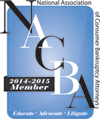A Home Equity Line of Credit (HELOC) is a type of loan that allows a homeowner to borrow against the equity they have built up in their home. Equity is the difference between the current value of the home and the amount owed on the first mortgage. With a HELOC, a lender provides a revolving line of credit, much like a credit card, secured by the home itself. In other words, it becomes a second mortgage against the home. Homeowners can draw funds when needed and repay them over time, usually with variable interest rates. While a HELOC can sometimes provide access to lower-interest borrowing, it carries serious risks when used to pay off unsecured debts such as credit cards or medical bills.
One of the biggest risks of using a HELOC to pay off unsecured debts is that it converts unsecured debt into secured debt. Credit cards, medical bills, and most personal loans are unsecured, meaning they are not tied to any collateral. If those debts become overwhelming, bankruptcy law allows them to be discharged, giving the debtor a fresh start without sacrificing property. By contrast, a HELOC is secured by the home. If the borrower later struggles to repay the HELOC, the lender has the right to foreclose, putting the home at risk. Essentially, unsecured debt that could have been discharged in bankruptcy is transformed into a debt that can cost someone their house.
Additionally, HELOCs often come with variable interest rates, which can rise unexpectedly. Payments may start low but increase significantly over time, creating new financial strain. This unpredictability can trap homeowners in an even worse cycle of debt than before.
Bankruptcy is designed to provide relief from unsecured debts without requiring individuals to risk their primary residence, especially in states with strong homestead exemption protections. By using a HELOC to repay credit cards or other dischargeable debts, homeowners lose those protections and jeopardize their financial stability.
In short, while a HELOC may seem like an attractive way to consolidate and lower interest rates, it is usually a poor choice when unsecured debts are overwhelming. Filing for bankruptcy protects the home and discharges debts, while relying on a HELOC can trade short-term relief for long-term danger.


